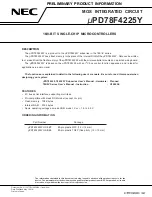
3 - 16 3 - 16
MELSEC-Q
3 LET'S CREATE AND EXECUTE A PROGRAM
3.4 Organizing Memory Cards and FDs
Besides BASIC programs, data can also be saved onto memory cards, FDs, and HD.
(See Chapter 6 for how to store data.) Programs and data stored on a memory card or
FD are collectively referred to as "files." This section describes how to organize files,
such as listing files and renaming files.
3.4.1 Displaying file names
It is possible to display a list of files saved in the file area of a memory card or FD and
HD. To display the list, use the FILES instruction in the format shown below.
FILE "[Drive Name] : [System Name¥][File Name]"[,S]
(1) See Section 3.3.1 (1) through (3) for how to specify [Drive Name], [System
Name¥], and [File Name].
(2) [System Name] and [File Name] can be omitted.
Wildcards (fuzzy specification) can also be used for the [File Name]. See
Appendix 1 for how to use wildcards.
(3) Specifying [, S] will also display the size and data along with the file name.
Usage examples
Let's assume that the files are stored in the following manner in the file area of the
memory card in MEMORY CARD 2
MITSUBISHI
MEMORY CARD
A6MEM-512KA-W
ABC
HIJ
CCC
III.BAS
EFG.BAS
HST.BAS
JJR.DAT
C.BAS
TEST.BAS
H.DAT
123.BAS
1)
2)
4)
FILES"1:"
\ A B C : \ H I J : \ C C C : T E S T B A S :
H DAT :123 BAS:
OK
This displays names of files without
a system name in the file area of
the memory card.
1)
………………
¥denotes a system name. This means that on this memory card, system names
ABC, HIJ, and CCC are registered.
















































